SEO Glossary: Important SEO Terms and Definitions
Table of Content
- SEO Terms: A
- SEO Terms: B
- SEO Terms: C
- SEO Terms: D
- SEO Terms: E
- SEO Terms: F
- SEO Terms: G
- SEO Terms: H
- SEO Terms: I
- SEO Terms: J
- SEO Terms: K
- SEO Terms: L
- SEO Terms: M
- SEO Terms: N
- SEO Terms: O
- SEO Terms: P
- SEO Terms: Q
- SEO Terms: R
- SEO Terms: S
- SEO Terms: T
- SEO Terms: U
- SEO Terms: V
- SEO Terms: W
- SEO Terms: X
- SEO Terms: Y
A

Above the Fold
It is the first half visible part of a website containing important information like title, graphics, statistics. If this part of the website is cluttered with way too many ads, the website is penalized by Google and other search engines and its results can be seen in SERP.
Absolute Link
It is a hyperlink that contains all information about the path to the document or file that it links with your website i.e. an absolute URL as opposed to a relative URL. It contains protocol (HTTPS), domain name and the location of a folder or file within a website.
Accelerated Mobile Pages (AMP)
Launched as a joint initiative by Google to challenge Facebook and Apple’s fast news services. AMP is an open source framework that is basically chunked out HTML copies of existing web pages which are capable of loading faster on a mobile device. It is a web development tool that lets us create user-first websites, advertisements, emails etc which can load faster than standard HTML5 documents.
AJAX
Asynchronous JavaScript and XML is a group of pre-existing technologies that can dynamically change the web applications in the back-end. It can help the user in gaining data from the server in the background without actually interfering with the front-end.
Algorithm
An algorithm is a set of mathematically calculated and ordered set of procedures to be followed to get to a conclusion. Mostly computers work on this fixed set of rules set by the programmers to calculate and solve complex problems with ease.
Algorithm Change
In SEO terms an algorithm change is the change in the code of the search engines like Google, Bing, Yahoo, etc which can then govern how and where to rank your website and its content on the internet and in front of your potential consumers.
Algorithmic Penalty
It is the punishment that a search engine like Google may fall upon your website in different ways throughout the internet, most basic being lowering your SERP ranking. It can even de-index your website from its database and ban it from its servers. To regain trust of the search engine follow its webmasters guidelines religiously.
Alt Attribute
Alt Attribute is a type of basic tag in HTML. Short for Alternate Text where a text substitutes the content of an image on the website, in case the image does not appear or load. It helps search engines analyze the lost information and can be helpful for visually impaired people alike.
Analytics
It is a domain of statistics that deals with thorough and careful examination of different forms of data. Raw or processed data from user interactions with websites can be analyzed by SEO tools like Google Analytics to gain insights and improvise your marketing plans.
Anchor Text
It is the blue, underlined hyperlink in a webpage. Anchor text can land you at a different section of the webpage without much time and attention-getting lost in the unnecessary information in between.
Article Syndication
It is the act of giving permission to third-party websites to copy or pick a part of your content and place it in their websites with the motive that you may be able to target a newer section of the audience, thus increasing traffic and building links. But it is a violation of webmasters guidelines for content and copyright infringement.
Artificial Intelligence (AI)
Contradiction to natural intelligence possessed by humans AI is machine intelligence devoid of consciousness and emotions but capable of logically making decisions. AI learns (stores) logic from the environment and processes it like an algorithm. AI performs functions that would originally require human intelligence like translations in a language.
Authority
It is the power of one particular website in a niche that is often quoted or referred to by professionals of that field. It has been bestowed its credibility by the fact that it is the most trusted website by its visitors. It is considered a very high-quality website by search engines.
B
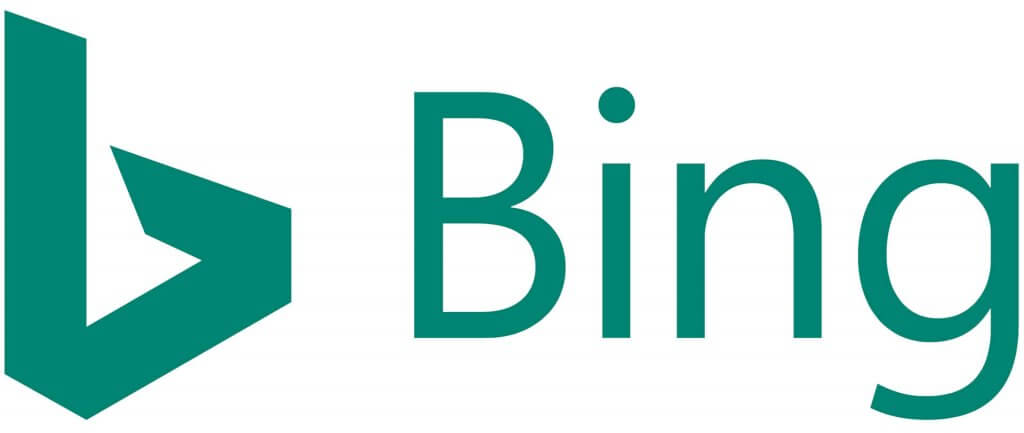
B2B
B2B stands for business-to-business transactions i.e. coordinated deals between two different companies in the same business. For example business between a raw material provider and its processor. It is usually a very lengthy process and involves many in-between professionals and dealers before finally reaching to its consumers.
B2C
B2C stands for business-to-consumer transactions where the manufacturer directly deals with its consumers without any delay from people involved in-between unlike in B2B. All forms of advertisements are examples of B2C marketing. It is short and so it is a fast marketing strategy.
Backlink
As citations are to books, backlinks (aka Inbound links) are to a website. Backlinks are links of the content on a webpage that is being referred by some other websites. These backlinks are very resourceful in ranking the page in a search engine because the relevance and quantity of backlinks to other websites decides how your page is being ranked.
Backlink Authority
In SEO when a hyperlink passes the authority of a webpage to another, the notion is called backlink authority.
Bait and Switch aka code swapping
It is a trick on the search engines for increasing the rank on SERP where the initial content which would be full of keywords, juicy links, etc are used as a bait for search engines to rank that particular page and once the purpose is fulfilled the content that was stuffed with keywords and unnecessary links is either partially or completely switched to a new content.
Banner Blindness
It is a behaviour developed by long-term web surfers and internet users where they consciously ignore information linke ads or banners on a website. They block that part to focus on the content they came to the website to read.
Baidu
Baidu is a Chinese search engine and internet-services provider company. Baidu is one of the largest multinational companies providing its own mapping, cloud storage, and encyclopedia services to its users.
Bing
Bing is a Microsoft-owned search engine and is the latest replacement of Microsoft’s previous search engine LIve Search. Developed with ASP.NET, it powered Yahoo! Search in a deal between Yahoo and Microsoft in 2009.
Black Box
Black Box means your complete privacy on the internet. It is a computer program where everything is possible but with limited access due to its very discreet and confidential programming. The algorithm of major search engines like Google is a black box.
Black Hat
Black Hat is a popular term for illegal hackers in contrast to white hat hackers. White hat hackers hack computer systems to reveal any loopholes in the program that might need replacement or repair while the sole purpose of Black Hat’s is to manipulate, rob, or destroy data from secure systems.
Blog
The blog is a web article with the sole purpose to share information with internet users around the world on personal websites or in ‘Multi-Author Blogs’ (aka MABs) available on various web applications. It is a form of social networking where people may share their ideas or information mostly in a reverse chronological format on a website such that the recent blog is at the top.
Blog Commenting
It is the act of sharing promotional links of a website or Youtube channel in the comment section of any blog which may or may not be of any relevance to the link. It was initially done to attract a target audience but with time people started abusing it by spamming comment sections of relevant and informative blogs with nuisance links which are now a violation of Webmaster’s guidelines.
Bounce Rate
It is an SEO tool that measures the number of visitors to a website who leave without any further interaction within the website. It is expressed as a percentage. In other words, it tells how relevant your website is in regards to the stickiness it offers its visitors rather than them bouncing back.
To Understand more about this SEO term please watch this video,
Bot
Crawlers or Bots are software applications that are programmed to run simple tasks which may be repetitive in a fast manner. They are automated scripted applications all over the internet to fetch and file data from web browsers. There have been instances when they have been used as malware for satisfying political agendas. Most web browsers and websites have rules and regulations which can decide whether bots are allowed access or denied to a particular site.
Branded Keyword
It is a unique query by a user on a search engine that generally includes the exact name of a Brand or Company. For example, ‘ACECLiQ’ or ‘ACECLiQ Kanpur’.
Brand Mention Link Building
It is a tactic where a website asks another website to add a backlink to their website. Another website mentions it because of the quality of content it provides along with other products or services worth mentioning. This ensures a higher return-on-investment.
Breadcrumb
It a tool for secondary navigation where users can know their exact location in terms of how many pages they went through from the initial web page to the one they are currently on. It links back to each previous page leaving a trail as in the story of Hansel & Gretel who left breadcrumbs as a trail to trace back to their home.
Broad Match Keyword
It is an option for keywords that will allow ads to be shown to people who search for a keyword or even related keyword i.e. with broad meaning is applied to keywords for targeting a larger audience.
Broken Link
These are links on the internet that leads the user to a webpage that no longer exists. In other words, they redirect the user to a 404 error page.
Browser Error Code
It is also known as Status codes and are issued by a server in response to a client’s query. There are 5HTML categories for status codes:
1xx for informational responses (100- continue)
2xx for success (200- OK)
3xx for redirection (301- Moved Permanently)
4xx for client error (404- Page Not Found)
5xx for server error (500- Internal Server Error)
C
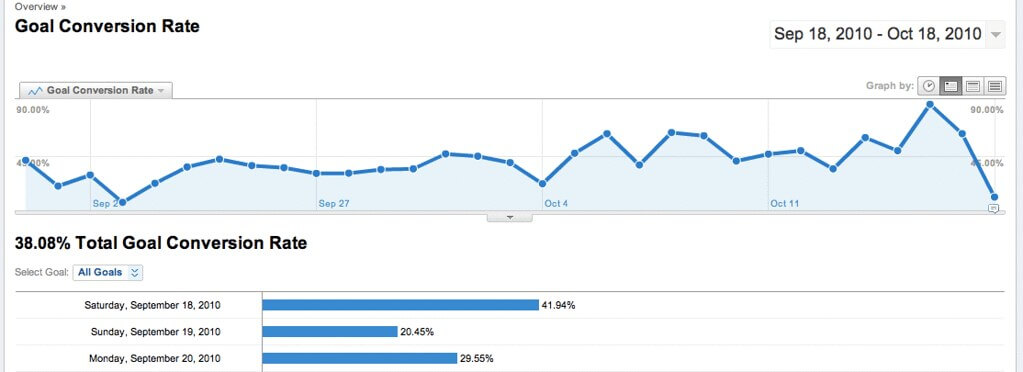
Cache
The cache is the stored data in software that helps process future requests faster like loading a webpage, graphics, content, CSS of a webpage, etc.
Cached Page
A cached page is a stored (backed up) HTML page of a website that might be taken down at some point. A search engine or a user’s browser might have saved it. Google cached pages provide copies of such pages.
Call to Action
It is an SEO tool where a customer can easily engage with your business. In marketing, it is a prompt on a website that appears once a visitor decides to click on an ad or visits the landing page. They are generally HTML form elements that may ask the visitor to become its newsletter subscriber or shop certain products or services.
Canonical URL
A canonical URL is an HTML element that helps Google’s Webmaster to prevent duplicate pages of your website due to two or more different URLs leading to the same page.
ccTLD
A country code top-level domain is a reserved domain for a specific country or territory. These are two-letter top-level domains. Example: .in, .uk, .us etc.
Click Bait
Click Baits are graphics or texts that mislead people to click or interact with them to gather more traffic to that site. They are designed to entice and manipulate people to engage with them.
Click-Through Rate (CTR)
It is the ratio of the number of visitors who engage on a targeted link or advertisement to the number of visitors who only view the referred webpage.
Cloaking
It is a technique where the content of a page or website which is visible to the visitors is dodged (cloaked) to different content to the search engine. It is a manipulative tool for optimizing search engines and also a violation of many search engine guidelines like Google.
CMS
Content Management System is a web tool for businesses and personnel to create, manage or modify their content on the internet. It is an SEO tool for easy handling of your websites etc.
Co-Citation
It is an interdependent relationship of two websites in the digital ecosystem. Here other users, websites, or content creators may quote two similar websites together which creates a sort of similarity that search engines store and analyze.
Comment Spam
These are irrelevant comments on web pages that can be about almost anything. Websites use bots to create advertising comments which can spam various places on the internet in the hope to attract visitors or increasing conversions.
Competition
Competition in the world of SEO is any website that may publish content with similar keywords and a similar digital marketing strategy as yours.
Competitor Analysis
It is analyzing the competition in your field or business by researching the keywords that are most often used on the internet. This will eventually help in gaining more clients, conversions, ROI and thus increased profit than your competitors.
Content
Content is any data on the web that was created for consumers present on the web. Content can be a text, article, graphic, link to almost anything we see on the internet. In SEO terms it is said that content is king because it holds the power to establish a monopoly over your business on the internet. Search engines rank your website according to the relevance of the content you upload on the internet, how useful and true it is for the consumption of the people surfing the internet.
Content Marketing
It is selling and buying content like articles, images, videos, etc. with the aim to create brand value for your business for the quality and credibility of the content. It is overall a marketing strategy to enhance brand awareness.
Content Silo
It is a part of technical SEO where the content of a website is organized into groups based on different parameters like keywords and other ideas alike. This helps both the search engines and humans to analyze the content and its relevance.
Content Syndication
It is the act of copying the content of a website and publishing it on another website with the aim to reach a broader audience. It is essentially copyright infringement but can be done with the permission of the owner of the content so that a website with better authority is showcasing your content thus indirectly increasing traffic to your website.
Conversion
Conversion is a technical term for the number of visitors who engage with a website rather than just viewing and leaving it. For example, clicking on a link on a website counts as a conversion.
Conversion Rate Optimization
CRO is the improvisation of the conversion rates to your website. Techniques like changing designs, layouts, CSS of a webpage along with making it more engaging by having more CTA forms, removing distractions, etc.
To Understand more about this SEO term please watch this video,
Cornerstone Content
It is the core of a website’s content and contains the best and most qualitative content which conveys the exact meaning of your business and is mostly linked to other web pages of a website. This content helps your webpage rank in the SERP.
Correlation
Due to the confidential nature of the search engines, the research on the relation of different elements of a search engine ranking page is called Correlation. It is a hit and trial method to get insights to optimize your website.
Cost Per Acquisition
Also known as Cost Per Action or Pay Per Action, it is an advertising model where we pay when a customer is acquired I.e. when a client performs any digital task like engaging with the product or making a payment for the same. While Cost Per Click is another model where the number of clicks on an advertisement decides the rate of the advertisement.
Cost Per Mile
It is yet another business model where we pay only when our ad is displayed for one thousand times and thus is known as Cost Per Thousand Impressions.
Crawlability
It is the ability of a bot to crawl I.e. navigate and index the content of a webpage. In other words, it is the discoverability of the pages of your website.
Cross-Linking
It is the act of leveraging multiple domains by simply linking other pages to your website. This gives you authority as various keywords can also be linked from your main website and thus helps you gain a higher ranking in the SERP.
Crawl Budget
It is the budget of the search engines where it decides how many URLs from your website are crawlable.
Crawl Depth
It is the extent to which a crawler in a search engine indexes a website. The depth of crawling means how many web pages which may be located within folders and subfolders of a website are indexed by a search engine. Such pages are ranked lower in the SERP but can be optimized via breadcrumb navigation and internal linking.
Crawl Error
When the search engine’s bots are unable to access some pages of your website.
Crawl Rate
It is the number of times the crawler will index a webpage in a day. A webmaster cannot control the number of times a crawler crawls a page, but it can request to recrawl it if some content on the webpage was updated. Crawl Rate Limit is the limit of requests one can make to the search engine in a second to index its webpage in the database.
Crawler
A crawler or spider bot is a program that is created for search engines to surf and analyze the world wide web for indexing the web.
CSS
Cascading Style Sheets is a styling language to represent elements of HTML in a user-friendly manner. They control the basic sizing, shaping, themes of the webpage.
Curated Content
It is the process of researching and collecting the content of a specific topic and presenting it in a more valuable form that can attract more users for the credibility and importance of the order with which it is arranged on your website. It is a strategy to gain organic traffic to your website.
Customer Journey
It is the journey of a prospect from being just a visitor to a potential and loyal customer to a brand or business. It is affected by how effectively a business is able to attract, delight, and engage a customer with so much pressure from the competition.
D
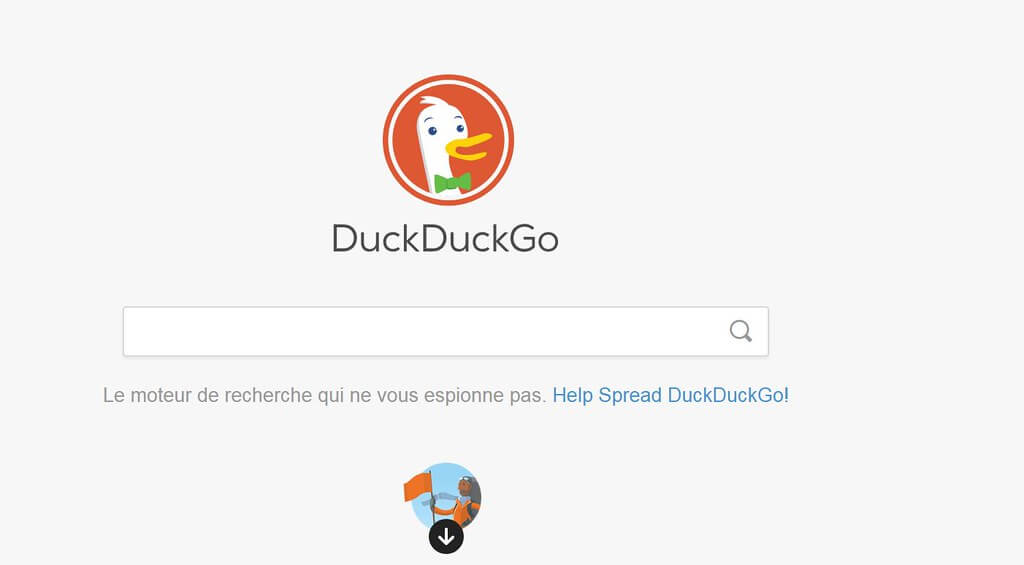
Data
Raw information with facts and statistics is called Data. Data is a computable resource in the form of variables, characters, special symbols, etc. Intelligent data forms the foundation of SEO and Digital marketing strategies and tricks.
Dead-End Page
A webpage that is unable to provide its visitors any queue to another webpage or any action.
Deep Link
Deep-link is a sort of smart link that leads its visitor to a particular target item on a webpage from any other source like a different website or web application. It is a specific in-app location rather than a home page.
De-index
De-indexing is removing certain web pages or websites from the search engine’s index and as a result, it won’t be displayed on the search engines no matter whatever different combinations of phrases you use to search. Sometimes search engines like google de-index some websites as a penalty for violating the terms and conditions of Google’s Webmaster.
Directory
It is a cataloged folder system on the web for website URLs of a particular niche, domain, or information. It improves your web linking and Directory submission optimizes the page rank of your webpages. It is an off-page SEO tool.
Direct Traffic
It is the traffic that your website gets when someone types the exact URL as opposed to organic traffic which comes when someone visits your website from SERP or via links from other websites.
Disavow
Google’s Disavow tool helps you gain control of your page rank by disclaiming or commanding google to ignore all elements that may be lowering your ranking by spamming your web content and which can’t be directly controlled.
DMOZ
DMOZ is an open directory for links on the internet, it was started and managed by The Open Directory Project.
Do-follow
It is a default form of a link.
Domain
A domain is the web address of your website on the world wide web. It is the address that is shown on the URL bar of the search engine. It usually ends with extensions like .com, .org, .in etc.
Domain Authority
The authority earned by a website due to its relevance in its niche/ industry. This was developed by the software company, Moz to depict the search engine ranking of a website.
To Understand more about this SEO term ,please watch this video,
Doorway Page
They are fake pages created solely for the purpose of redirecting a user to a page that is nowhere connected to the search query or the URL. This manipulation helps in gaining page rank.
DuckDuckGo
DDG is a search engine that shows different search results to different users for the same search query. It is known for valuing the privacy of its users.
Duplicate Content
It is similar content appearing on more than one website, it can be a part of the content which could be exactly the same and can be punished by search engines like google by blocking the site copying the content from the search engine result page (SERP).
Dwell Time
It is the time a user spends (dwells) on a website before returning to the Search Engine Result Page. Lesser dwell time indicates low page quality while longer dwell time can probably turn your prospect visitors into potential subscribers.
Dynamic Link
It is a web page address that is generated every time a query is made. These are database-driven web pages and are dynamic in nature because their content is changed each time a query is being resolved. They are created by servers or CMS because of their random nature and are non-descriptive.
E

E-A-T
Short for Expertise-Authority-Trust is Google’s quality rater scheme where it measures a site’s relevance and legitimacy to decide its ranking. It is considered a very important ranking factor along with YMYL i.e. Your Money or Your Life where the content of a page affects the finances, health, or safety of a visitor.
E-Commerce
It stands for Electronic Commerce i.e. the process of selling and buying goods and services on the internet.
Editorial Link
A link that one website generates for another due to the virtue of it providing relevant and good marketing techniques. It is the symbol of a strong link profile and an editorial link is created without permission or payment from the recipient.
Email Outreach
In SEO email outreach is the technique of reaching out to other websites (probably with higher domain authority) via emails and creating backlinks with them. In simpler words, it is promoting your website’s content with an attempt to collaborate with pages that might have broken links in articles related to your niche or pages with no valuable outgoing links. Such pages are potential in link building and expanding traffic to your website.
Engagement Metrics
It is a meter to measure the engagement rate of the user’s which depends on how they respond to the content, presentation, and other entities of your webpage. This meter includes all sorts of interacting variables like dwell time, bounce rate, CTR, number of visits, etc.
Error 404
It is an HTML browser error code also known as 404 Not Found or Page Not Found which indicates that a web resource is either temporarily or permanently missing. HTTP 404 is a client error response code that often leads to broken or dead links.
Exact Match Anchor Text
It is anchor text that has keywords that are the same as the page they are linked to i.e. an exact match.
Exact Match Keyword
An exact match keyword is a keyword type that lets you display your ad on the search engine when a user types the exact phrase or keyword that relates to your products or services. These are the same words in the exact order that you fed in the search engine and now a user types the exact keyword when they can finally see your ad.
External Link
Hyperlinks that take the user to any external website or domain other than the one they are currently using.
F
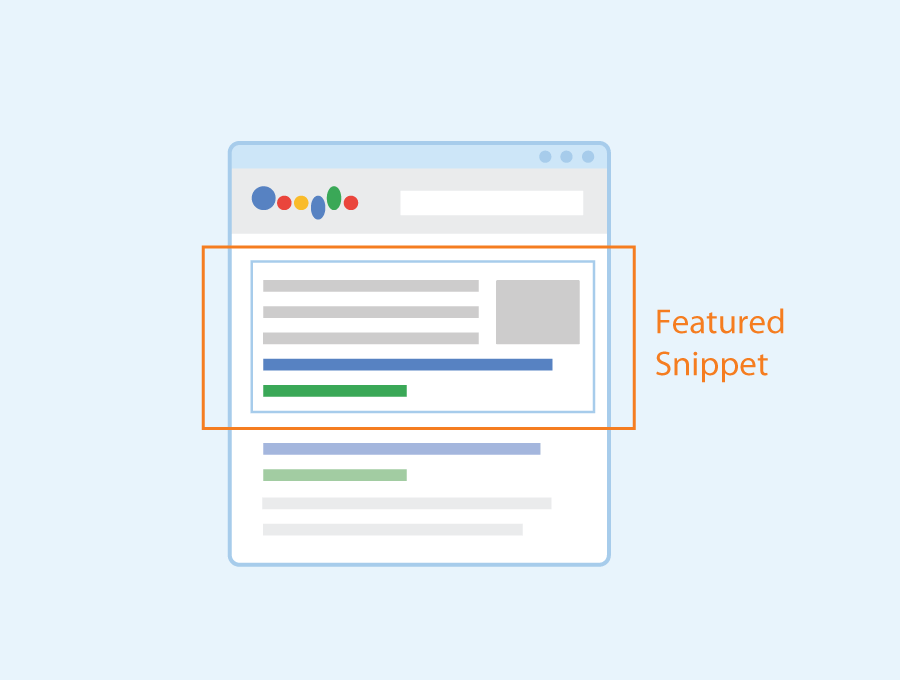
Favicon
These are small 16×16 pixels website icons that help your website look distinguished from other web pages opened in a browser. It is a miniature logo of your brand that appears in the bookmarks menu, search bars, or history tabs of a browser with the sole purpose to help in navigation.
Featured Snippet
Featured snippets are search engine features that give brief textual information sometimes aided with visuals for any searched query.
Findability
It is the measure of how easily any content or information can be discovered either externally on search engines or internally by users of the particular website.
Footer Link
Also known as the boilerplate links, they are links found on the footer section of almost all websites.
G
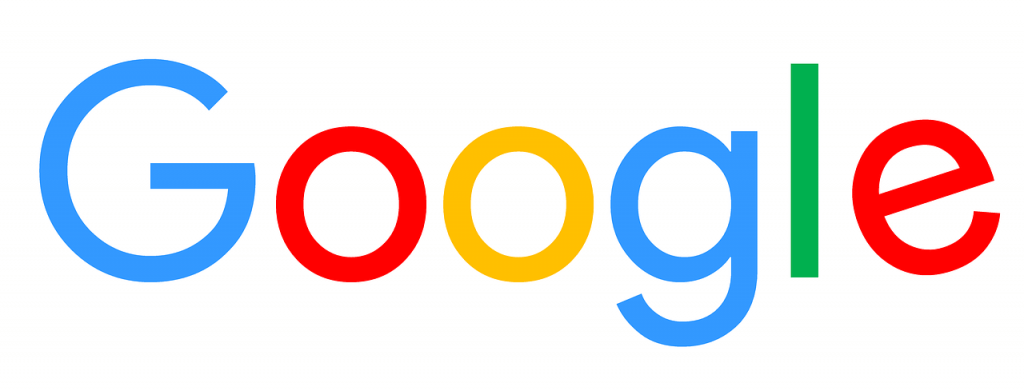
Gateway Page
It is also known as the doorway page and is designed to manipulate search engines and visitors to visit pages within a website because doorway pages are themselves short, highly optimized but invaluable pages that rank highly for specific queries and can lead to the main webpage of a website.
Gated Content
Also known as the Lead magnet is a category of content designed in such a way that it attracts potential customers and engages them in conversing with the brand and ultimately sharing their contact information. In other words, as a magnet attracts iron, gated content attracts lead in a business.
Geotargeting
It is the technique to deliver specific content to a particular set of audiences based on their geographical locations.
Google is a multinational tech giant founded by two Ph.D. scholars Larry Page and Sergey Bin in 1988 and today it provides numerous internet-based services like the search engine (Google Search), cloud storage (Google Drive) other management suites like Google Docs, social interaction web applications, other software and hardware all around the world.
Google Ads
Also known as Google AdWords is an advertising service provided by Google’s search engines to businesses. Here brands pay for every time their ad is displayed and clicked upon when a decided set of keywords are searched in the search engines. This is how Google makes money from searches.
Google Alerts
It is a notification service when the content of particular keywords is updated Google notifies you via emails. It is basically a content change detection service where the search engine looks for new webpages, news or graphics related to the keyword you followed and sends alerts when the content with those keywords is indexed. In SEO it is a powerful tool as it helps you keep an eye on your competition or save you from maleficent reputation risks.
Google Algorithm
It is a complex system that Google and other search engine’s use to rank the websites on the SERP after evaluating the quality of the content with all the keywords associated with it. Google’s Algorithm itself is a set of multiple algorithms. It is designed to give unbiased search results. It retrieves information from pre-indexed websites in its repository and presents to the user in minimum time, when a query is made.
Google Analytics
It is a website traffic analysis tool offered by Google to provide insights on audience tracking, conversion rates, dwell time, etc. to the owners of websites which helps them to take appropriate actions to improvise their digital presence. It is a must-have tool for SEO and internet marketing.
Google Autocomplete
It is one of the basic search features of Google’s search engine. It provides suggestions to complete a search query while you start typing in the search box. It reduces typing effort by about 25% by providing you predictive automated completion to most commonly searched sentences or by finishing certain phrases or words. For example when you type Los it will show Angeles automatically among other suggestions like Los Angeles Time etc.
Google Bomb
It can be seen as a contradiction to Search Engine Optimization, Google Bombing or Google washing is a term associated with the act of ranking a webpage on google for its irrelevant, misleading, and often unrelated content. This is achieved by stuffing the page with a large number of website links to a specific anchor tagged text which helps it rank that keyword.
Google Bowling
It is a spamming black hat SEO technique where a competitor’s website is made to violate Google’s Webmaster Guidelines. It is done by building a mesh of a huge number of backlinks to their website. It is popularity exploitation by means of unnatural links.
Google Dance
Widely used term till 2002 when Google used to update its ranking algorithm and search index every month which led to massive volatility to your website assets.
Google Fred
It is an algorithm upgrade in Google’s search engine and was initially launched in March, 2017.
Google Fred targeted black hat seo methods used by websites that create low-quality user benefiting content, and are focused on aggressive monetization via advertisements and aggressive affiliate setups.
Google Hummingbird
It was a massive and famous update by Google on its search algorithm inspired by the accuracy and speed of the Hummingbird. It was launched to improve the methodology of searching a query where instead of merely talking to the homepage of a website, it would take the user to a more specific webpage resolving the query. This program emphasized insights given by a deep understanding of context-related queries rather than being more keyword-oriented.
Google Keyword Planner
It is Google’s keyword research and management tool. It helps you keep an eye on the latest keywords and make a note of them so you don’t miss any while optimizing your website according to the search engine. This tool gives data-driven outputs and has flexible features like average search volume of particular year and region. It is free and is thus a popular means to gain insights on the number of impressions on specified keywords for an observable time period.
Google Maps
It is another of Google’s popular web-based services providing detailed maps of the whole world with every city, street, mountain and river. It has all sorts of topographical features. Basically Google Maps were designed for navigational purposes for easing day to day commuting aided with aerial and satellite views of various places.
Google Mobile-Friendly Test
It is a tool for website owners to know how mobile friendly their websites or web pages are. It is a great tool because it is easy to use. With so many users accessing websites via phone is increasing, it has become necessary to optimize and get insights on mobile optimization of websites.
Google My Business
Google My Business offers the tools to manage and list your business on search engines. In addition you can utilize it more effectively by listing your brand digitally on Google Maps and popularizing your website through the internet. Write brief descriptions about your business, products and services. You can edit, add or verify your details. It makes SEO easier and creates a strong brand reputation.
Google PageSpeed Insights
It is another excellent tool to measure the page speed of any webpage on the internet. It is a free tool offered by Google which describes page loading speed for both mobile and desktop variants. Not only this, it tells the scope of improvement in a webpage by listing all possible factors that are causing your slow site speeds. And it is absolutely free.
Google Panda Algorithm
Another massive algorithm change by google in 2011 aiming at lowering the ranks of low-quality webpages aka content farms and ranking higher quality webpages. Google Panda’s rollout flamed revolution against scrapers or copyright infringers.
Google Penguin Algorithm
Google Penguin was rolled out in 2012 with the primary focus to penalize websites that manipulated the number of backlinks associated with a webpage and violated Google’s Webmaster Guidelines to rank on the search engine (now known as Grey Hat SEO techniques).
Google Pigeon Update
Launched in 2014, Google’s Pigeon updated the algorithm to provide buoyancy to local business by increasing the ranks of local listings in a search query.
Google Pirate
It came in August 2012, it is another of Google’s algorithm updates that affected the SERP rankings directly. It was very similar to Google Panda and Google Pigeon updates in the aspect that its main aim was to demote and demolish websites with high pirated content. Google Pirate dealt with websites and webpages that had been issued huge numbers of copyright removal notices.
Google Possum
It was an update in Google’s search feature algorithm. Rolled out in 2016 it lets the search engine deliver more authentic and trustworthy local search results rather than spamming results. In simple words it was aimed at giving more region or locality based search results to the queries of a specific user.
Google RankBrain
Google RankBrain introduced machine learning i.e. the ability of machines to learn from the data and execute appropriate action for the same in a structured query. It came out in 2015 and has been considered a very significant ranking control in google’s algorithm.
Google Sandbox
The Sandbox effect has been talked about since forever now (just kidding the sandbox theory was written in 2004). This algorithm will basically interfere with visibility for newer websites to see the impact of their optimization, as google will filter these links based on the active age of the domain and its competitiveness in including keywords in those links.
Google Search Console
It is a tool that helps webmasters to see their indexing status and improvise their visibility on the search engines. It offers visibility to see indexing errors and observe your website’s speed.
Google Site Links
These are links of branded websites’ web pages that help in navigation. Sitelink extensions are shown in the SERP so that people can directly reach a specific webpage rather than searching that content in the website. Google Sitelinks are automated, that is it always shows sitelinks off websites that are high ranking and high-quality.
Google Trends
Yet another awesome SEO tool that helps you gain insights on trending keywords, queries and get updates on new digital marketing and optimization trends around the world. You can filter your query based on time and region among other things.
Google Webmaster Guidelines
These are guidelines issued by google to function and manage your website’s presence on google in a legally acceptable manner. It includes doing’s and don’ts to run your website properly without getting penalized for things like copyright infringements, manipulation of SERP, etc.
Grey Hat
It is the jargon of the web for someone who practices ethical hacking to ensure and show webmasters the probable security issues or loopholes in their program, application or website, or even your digital presence. They can be thought of like the Sherlock Holmes of the cyber world.
Guest Blogging
It is blogging on someone else’s website or webpage on their invitation or voluntarily. In other words, contributing to the content of a third-party website as a freelancer.
Guestographic
It is a technique of generating infographics and writing unique articles related to it which can then be offered to other websites with similar content. In return for the infographics, backlinks are created to your site. It is basically a small SEO trick to strengthen your link building process.
To Understand more about this SEO term please watch this video,
H
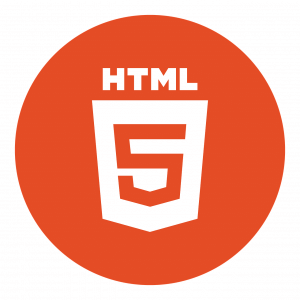
Heading
Heading tags are basically HTML elements ranging from H1 for the huge text like the title to H6 for small text. They are important SEO tools for search engines to recognize the content of the webpage and also for readers they act as milestones to know what type of and how much content does the page contain. It should be used intelligently especially H1 tags where keywords must be relevantly inserted for better ranking.
Headline
These are written in H1 tags and are deciding factors for search engines to display your page in a related query, the relevance of keywords in your headline will decide the ranking of your page among other things.
Head Term
The terms which generate over 10,000 searches per month are considered head terms and they are usually difficult for ranking.
Hidden Text
These texts are hidden in the form of links or content in a webpage via manipulative techniques like misuse of CSS to not display the text, it being the same color as the background, etc. Hidden texts are used to rank the page and are in violation of Google’s Webmaster Guidelines.
Hilltop Algorithm
Developed by Krishna Bharat and George Mihaila it operates by suggesting relevant keywords related to the query that would yield more informative results for that particular query. It works by establishing a relationship between expert documents and authority pages.
Hilltop
It was a search engine working on the principle of hilltop algorithms.
HITS Algorithm
Hyperlink-Induced Topic Search (Hubs and Authorities) is a link analysis algorithm programmed by Jon Kleinberg and
Homepage
It is the first page of a website that a user first sees when they search its URL or anything related to the page. It is an important page in terms of SEO as its theme, layout, and UI would decide the traffic to your website, your page rank, conversion, etc. It is a place for your website where a user can easily see all things your idea or business is about in a brief manner. It can be compared to the contents page of a book.
Hreflang Attribute
Rolled out in December of 2011, Hreflang Attribute is an SEO feature which enables search engines to establish relation of the same webpages in different languages. It is used to target audiences of specific locations with the same content and alternate languages.
For example, the english of the UK, USA and Australia use different variations of spellings for the same word so three different web pages with the same content are published in three variants of english to engage all audiences. Hreflang is also used in providing simple features like currency change to audiences of different locations.
To Understand more about this SEO term please watch this video,
.htaccess File
It is short for Hypertext Access. It is a server configuration file by Apache web server and it lets you configure features like rewriting URLs or creating special rules to function your web server. WordPress controls your permalink structure through a .htaccess file.
HTML
Short for Hypertext Markup Language. It is a standard markup language that helps you design your web pages with the help of other technologies like CSS, JS, PHP, etc. The elements of HTML are deciding factors for the page rank of your website in SERP.
HTML Sitemap
HTML Sitemap provides a clickable list of all webpages in a website. It is usually attached in the footer and is super convenient for users to navigate through gigantic websites with many pages. They are a must have because they speed up the indexing of all your web pages on search engines by crawlers and bots. But unlike XML Sitemaps these are accessible to the users while XML is a sitemap made only for search engines. On an SEO basis they increase your visibility on search engines.
HTML Source Code
Most important thing in SEO, it controls every technicality of running and optimizing a website. HTML stands for Hypertext Markup Language, which is a markup language popularly used to write commands for creating and maintaining webpages. While HTML Source Code is a mixed bag of HTML, CSS and JS.
To find the source code of any desired webpage follow these steps:
STEP 1. Open the desired webpage or website.
STEP 2. Go to the address bar.
STEP 3. Type view-source: in front of the URL.
STEP 4. Press enter to view its source code.
HTTP
Short for Hypertext Transfer Protocol i.e. a protocol that responds to the links between web clients by fetching information like HTML etc.
HTTPS
Short for Hypertext Transfer Protocol Secure. It secures the communication between the user and the web browser.
Hub Page
Hub pages link sites in a logical and hierarchical manner even considering unrelated topics.
Hyperlink
It is also called link, it is anything from an icon to text or any sort of graphics that is clickable and lands the user to a new document or text within the same page or a different webpage. It was created as a feature just for the sake of easy navigation but now the internet cannot be imagined without hyperlinks.
I
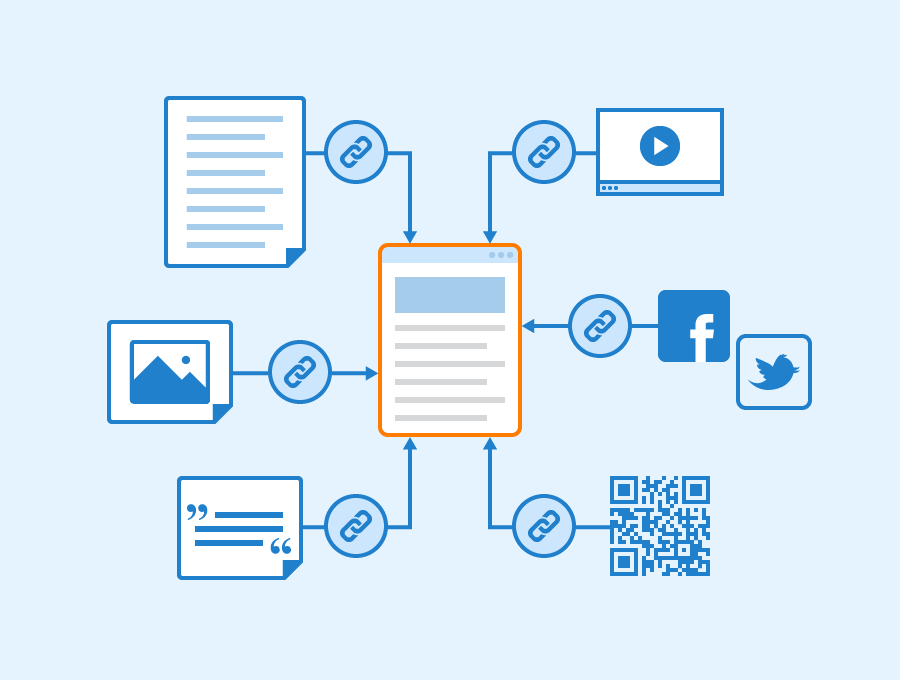
Image SEO
Another tactic of SEO where image optimization is done. It can be any graphical content which is made more improvised by manipulating its size, using alt text for visually impaired and search engines to establish a relevance with content of the webpage. By all such efforts you are increasing the loading speed of your website which google loves. Secondly you are increasing your visibility in the search engines.
Image Sitemap
Googles’ developer tool suggests websites to index their images for better optimization. For this you have to create an XML sitemap or add images to an existing sitemap for letting crawlers reach your images with ease.
Impressions
These are also called IMPR i.e. Ad IMPRessions. It is the number of times an advertisement was displayed in the SERP or anywhere in the digital reach of the advertiser.
Inbound Link
It is a link given by some other website to your website without you actually asking for it. It is a symbol of powerful content on your website which helps you gain rank on SERP.
Index
It is the database of the search engine, if your website is not submitted for indexing in a search engine users will not be able to find it on the internet.
Indexability
It is the ability of a search engine to search, analyze and add or subtract a page from its index or database. It is contrary to crawlability.
Indexed Page
These pages bring organic traffic to your website and have been already crawled by bots like spider bots for google. They give credibility and rank your page in a related query.
Infographic
Infographic is the visual representation or an aid to textual content. It is information in graphical format and an effective way to engage users to visit your content. In SEO it is leveraged to get higher rankings in SERP because they are convenient and easy to understand for users and search engines usually rank relevant and qualitative content for its users.
Informational architecture
It is structurally designing information in the digital environment through libraries and databases by organizing data for its appropriate discovery and usage.
Informational Retrieval
IR is the science of retrieving data of usually an unstructured nature to provide the organization tacit knowledge of data in the digital arena.
Internal Link
These are hyperlinks within a website used for navigation. An internal link opens a webpage of the same domain.
International SEO
It optimizing a website keeping a global audience in mind. Here businesses and brands target the internet users of different countries and languages and work on ranking their websites on SERP. In contrast to Local SEO the keywords, region specific webmaster guidelines and content a webpage varies from place to place to fulfill needs of global customers rather than local consumers. Some examples would be translation, currency, search engines etc.
Interstitials
It is an advertisement pop-up in a webpage which is generally interactive and full-screen. It can be disturbing for users because they are needed to be manually closed if a user wishes to not engage with it. They are most commonly placed when you are ascending to a new webpage within a website.
IP Address
It is short for Internet Protocol i.e. a protocol controlling the format of the data shared across the internet or local network. Every device on the internet is identified by its unique IP address.
IP Cloaking
It is a black-hat SEO technique where an IP address is cloaked or hided from a search engine. It is an SEO trick to improve page ranking by showing content to users based on their IP address while presenting a manipulated version stuffed with keywords to the search engines.
To Understand more about this SEO term please watch this video,
J

JavaScript
It is a high-level multi-paradigm programming language. Abbreviated as JS, it is one of the core technologies of web development. JavaScript makes your website interactive with CTAs along with making it discoverable by search engines. But it can also make it difficult for bots to crawl your website and index them.
JavaScript Rendering
It is used to alter the document object model (DOM) and show its results on a web browser. JavaScript rendering lets users access and manipulate DOM via getElementById method.
K
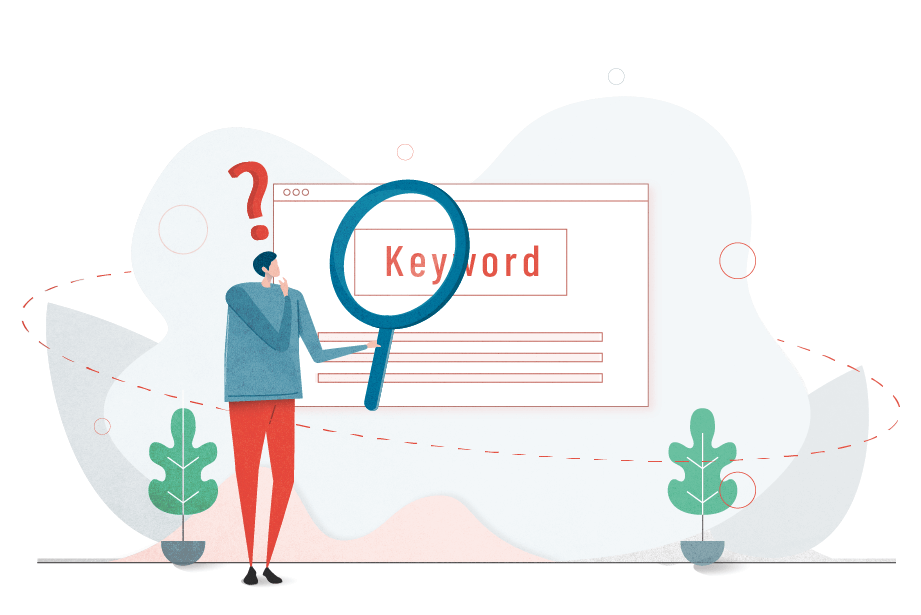
Keyword
It is the potential word or phrase that a visitor uses on the internet to search for a query. The more it matches the words in your content, the more visible your page is on the Search Engine Results Page. These keywords decide the relevancy of your content, how useful they are for the users online, and how easily they satisfy your users.
Keyword Analysis
It is the part of keyword research where you analyze a certain set of keywords based on various methods. These methods basically depend on your SEO strategy. With keyword analysis you get insights on organic searches, competitive keywords, those which you want to use in future and so on. This will surely make your content high quality and you can get an improved ranking in SERP.
Keyword Cannibalization
It is using too many keywords in the different web pages in your website because of which a search engine may rank an unimportant page than the ones you would like to rank. This can not only lower the quality of your website and UI but will also create a negative brand value.
Keyword Categorization
It is another part under Keyword Research and involves grouping of certain similar sort of keywords that were queried at different levels of a process of engaging with a business. Keyword Categorization is an overall beneficial thing because it helps you organize your keyword research and lets you see what keywords are most used by customers to engage with a web page. From a business perspective it tells what a user wants to know before buying your product, this will help you create content accordingly.
Keyword Competition
It is a metric of how difficult or easy it is to rank your website on SERP for a specific keyword in your niche. SEO agencies estimate the time they will require to rank your business for that particular keyword after analysing keyword competition. This is important for advertisers too, it helps them determine which keyword is worth running their ads in.
Keyword Density
It is the number of times a keyword is repeated on your website. Increasing or decreasing the frequency of the same keywords won’t assure you any page rank as search engines don’t count keyword density while deciding the relevancy of your website.
Keyword Frequency
It is the number of times a keyword appears in a webpage. It seems like keyword density but both are quite different. Keyword density is a percentage of a keyword over total number of words in the whole webpage.
Keyword Funnel
It is another tool to categorize keywords to keep an eye and utilize them in gaining SERP rankings. Keyword Funnel comes from the idea to funnel a range of keywords to a more particular keyword, it is eventually a technique of keyword research. It helps to know what potential customers think or query before actually buying or engaging with your stuff.
Keyword Prominence
It refers to the noticeable placement of keywords throughout the web page. In SEO Keyword Prominence is utilized in gaining page ranking by placing keywords in prominent places like headings or paragraph starting or in meta description and title of your webpage.
Keyword Proximity
Proximity means closeness and keyword proximity refers to the closeness of keywords in a phrase. In simple words it tells how close two or more keywords are with respect to each other. Greater the keyword proximity in your webpage the higher ranking it will achieve on the SERP. It is a metric for search engines to determine the relevance of your content.
Keyword Rank
It is the ranking of a webpage or website on SERP for a specific keyword.
Keyword Research
It is the thorough study and analysis of keywords or phrases that users generally type in the search engines while searching for some products, services or resolving their queries. Such words prove beneficial while creating content for a website to target a larger audience and crawlers on the web.
Keyword Stemming
Stemming is adding prefixes or suffixes into root words. Keyword Stemming is an SEO technique where variations in keywords on the basis of stemming is made so that basic or root word is detected in a query and relevant results are provided.
Keyword Stuffing
It is an over-exploitation of keywords where websites in the name of SEO flood their content, metatags, and backlinks with keywords to gain page rank but in doing so they are actually demoting their relevance. Google’s Webmaster penalizes webpages for overstuffing keywords by lowering their page rank.
Knowledge Graph
It is a tool by Google where it gathers information relevant to a query from different sources and answers them directly by displaying all such data at the top of the search page.
Knowledge Panel
They are one knowledge-rich place on Google search engine that appears when a user types their query. It contains information in the form of text, images, or videos about people, places, things, and related websites.
KPI
Key Performance Indicator is a tool to estimate what goals can a business effectively achieve. With KPI, evaluation of a company’s success can be forecasted by analyzing its activity and engagement in the business they are up to. In digital marketing companies set their KPI and try to increase their ROI by accomplishing their target.
L
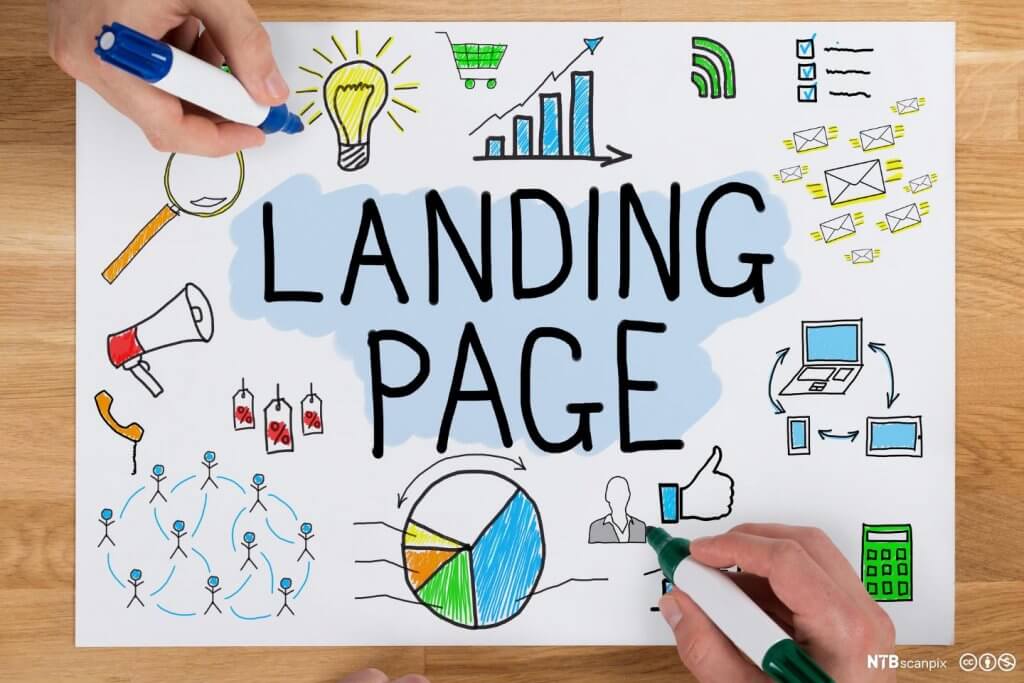
Landing Page
A landing page is a type of follow-up page on a website that is distinct from the homepage or any other page on your website. In digital marketing, a landing page is a standalone page that converts prospects into customers and regularly increases your return on investment. It is the final aim page of an e-commerce website.
Latent Semantic Indexing (LSI)
It is the technique by which search engines analyze how words or phrases adjacent to a keyword are semantic to your content. In other words, LSI helps in indexing your web pages by search engines on the basis of the relationship your content holds in the context of the keywords you used.
Lead
A Lead can be any individual or business that seems to be potential clients due to their interest in your work. In SEO these entities are important for conversions and are identified by any interest they show by engaging with your website. For example, sharing their personal information, visiting and exploring a variety of content on your websites, subscribing to newsletters, or possible interactions with CTA’s, etc.
Lead Magnet
Lead Magnet is an SEO tactic where potential leads are allured to get a free service or product like an e-book or free subscription for a trial period in exchange of their information.
This information is usually the leads’ email address while sometimes some forms asking for their birthdays, nationality, gender or other interests are asked to be filled.
This data is very insightful pertaining to likes and dislikes of your audience and in making effective SEO strategies or even brainstorming on new products.
Link
A link is a connection between any two elements like documents, webpages, websites, etc created using HTML. It takes the user to the specific data referred to on the link. They are important and basic features for navigation in the world wide web. In SEO they affect page ranking and quality of a website.
Link Bait
Link Baits are created to entice people into viewing and interacting with special content that can cajole them into sharing and embedding them into various other websites or blogs over the internet. They can coax users by their usefulness and a generalized sense of humor.
Link Building
It is a technique to gather backlinks from established websites for optimizing your reach and ranking your page. By publishing unique and significant content you can persuade other websites to link to your website or by collaborating with them you can forge a strong link building. For businesses, it gains you more organic traffic which raises your ROI eventually.
Link Burst
It is an outburst of way too many backlinks to your website in a short period of time. It is not considered feasible and because search engines then start considering your website is outsourcing link building through unfair means. Although this rate of link building is considered good too as it can also signal fresh and relevant content. It generally happens when a viral content collects backlinks naturally.
Link Diversity
It is an SEO technique to build a natural profile with diverse inbound links from websites in different niches so that you don’t leave a trace behind for search engines’ algorithms. Link diversity is also having backlinks from different domains like .org, .co and so on. This is healthy for your website and delivers higher page rankings and increased organic traffic.
Link Equity
Also known as Link Juice, it is the property of certain links to pass their equity i.e. their authority and trust from one page to another. This equity depends on the relevance of the content, HTTP status, etc of the page.
Link Farm
It is a group of websites linking each other on the web in order to gain page rank. This can be done manually or by automated programs and is generally a clique.
Link Hoarding
It is the practice of captivating a large number of inbound links while not giving any outbound links thinking this optimizes their website on the search engines. It is a wrong perception of the few who hoard inbound links that giving outbound links lowers their page rank and lowers their traffic. Link Hoarding creates a bad digital environment and promotes unhealthy competition.
Link Popularity
It is the popularity a website gains by possessing a large number of inbound links. Link popularity gives you good ranking in SERP and is an important aspect of off-page SEO.
Link Profile
All sorts of links that direct to your website. It is an overall assessment of all inbound links that a website has gained and a good link profile will have a diversity of links not only the links to the homepage or landing page. It improves the quality of the website.
Link Reclamation
It is the process of replacing broken links with updated links and reclaiming links that you once owned but now cannot find in your website. It is necessary for link building and relevance of your page because most of the time broken links land your visitors to a 404 page or redirect to unnecessary pages.
You can also search for your brand name on the internet and ask the other website to mention it as a link.
Link Relevancy
Link Relevancy refers to how closely the websites that give you inbound link are related to your business niche. Besides authority, link relevance is important because it affects your brand reputation in the SERP. You should have backlinks from high-quality websites in your own niche.
Link Rot
It is the phenomenon where old web pages get removed or relocated and the links that are bound to them cannot access them. Also known as Link Death, it happens when a website takes its content down or there is irregularity in site auditing and management. While you keep on linking new content with the belief your old pages are alright.
Link Spam
Also known as Blog Spam, it is an irritating technique of posting too many links in the comment sections or forums of various websites or web applications in the hope of getting free traffic to a website. They are mostly spams without any relevance to discussion in the forums or even no relation to the content of the website. They have no-follow links. They are created for getting a high rank on SERP and can be penalized.
Link Velocity
It is the speed of building links or gaining backlinks in a fixed period of time. It can boom your traffic and may increase your page rank but can also be considered as potential spamming.
Local Citation
A Local Citation is a part of Local SEO where the name, email address, physical address and phone number of a local business is digitally mentioned. It helps in finding local businesses and can help in ranking a page in the local search engine results page.
Local Pack
Also called Local 3-pack it is a Local SEO term referring to use of schema markup for local businesses. It can be seen at the top of the first page in SERP and it lists 3 businesses. These business listings often come with an address of the businesses on the map, their name, contact info and link to their websites.
Local Search
It is searching businesses in a specific geographical area and fulfilling the query of customers based on their location and needs. It is direct engagement via physical stores.
Local SEO
Local SEO is improving SERP ranking and gaining more traffic of local leads, prospects and consumers. It is optimized by generating region or locality specific content and adding features to the website that delight locals while accessing you digitally.
Log File
A log file in a computing system keeps the record of all activities associated with the operating system or other system apps in a detailed manner. Information like IP Address or ISP is stored in the log file in the form of a log.
Log File Analysis
Log File Analysis is a strategy to improve your website’s SEO by gaining insights through the data stored in the log files of your website. With this log file, one can witness how bots interact with your websites, other trends, and anomalies that you can use to your advantage.
Long-Tail Keyword
They are keywords that are more specific due to the increased word count and yield particular results. They show potential purchase intent and are useful for marketers to target.
Lost Link
A lost link is a link that does not give your page link value. A lost link can be said as a backlink that either stopped working due to its relocation or a webmaster removed it from the website it connected to.
M

Machine Learning
A branch of Artificial Intelligence where algorithms can learn from data and analyze data patterns to make decisions independent of natural intelligence. It automates analytical model building by learning through experiences and data interaction.
Main keyword
It is the main word in your webpage that occurs the most number of times and the whole content revolves around it. It is also known as Primary Keyword and should be present at prominent positions throughout the article including headings, titles and other most viewed areas. Writing content around the main keyword creates an authentic high-quality article that showcases your expertise in the field and helps you attract organic traffic and build a strong link profile. But too much stuffing of the same main keyword reduces the relevance and quality of your webpage. It is a very significant word in keyword research and SEO terminology.
Manual Action
Manual Action is Google’s algorithm to detect spamming websites and removing them from the search engine i.e. de-indexing them. In other words, Google’s search engine can demote a website after manual approval if that website was violating Webmaster’s guidelines.
Meta Description
It is an HTML attribute that describes the content of your webpage and can be seen in the head section of the HTML code. For more organic traffic it should be made relevant and interactive. In simpler words, it is the brief summary of a webpage and can be accessed on google by simply right-click anywhere on the page followed by the ‘View Page Source’ option or press Ctr+U which will open the HTML document, the head section contains all metadata.
Meta Keywords
These are the keywords in meta description in the head section of an HTML document and are considered irrelevant for page ranking by search engine algorithms due to over-exploitation of keywords in the past. They are essentially tags.
Metadata
Metadata literally refers to an underlying description of data. In SEO it is used to crawl a webpage and often contains important information like page title and meta description so that a webpage is easily indexed. It affects the page ranking and search engines read this to know how relevant your page is to a query made on the internet. It can be identified as the initial part of an HTML Source Code.
Meta Refresh
Also known as Meta Redirect, it uses an HTML meta element to instruct a web browser to refresh a certain webpage after a set interval of time. It uses the parameter
<meta http-equiv=”refresh” content=”__”>
It is used in dynamic web pages which require updated content after a certain period of time. For example e-commerce websites often have to update information on their stock which needs to be presented to the customer in relevant time spans.
Meta Tags
Meta tags are text that appears in the source code but are not visible on the webpage and it functions to describe the content of the webpage. It is in the head section of the HTML document and contains the title tag and meta description tag.
Metric
It is the measure to monitor SEO performance based on organic traffic, CTR, bounce rate, conversions, etc.
Mirror Site
It is a copy of a website which can be hosted on a different server and can have either the same or a new URL. Their purpose is to deliver fast results and provide good UX to users when there is too much traffic on the original website. They are generally made for different geographical areas with exactly the same content as the primary website, it can be said as a clone website.
Mobile-First Indexing
It is the process of indexing the mobile version of the website first and then crawling the desktop version. If you have not properly optimized the mobile version of your website by checking its visual proportions or loading speed, then that will affect the relevance of your website in front of the search engines. Mobile- First Indexing can effect and alter your SERP rankings.
Mobile-Friendly Website
It is simply a website with good mobile optimization created to give an awesome user experience. It is created keeping in mind how well a website will respond on desktop as well as mobile or by separately creating different mobile versions of the website. They generally have fast loading speed and can be the first interaction for a lead.
Mobile Optimization
It is an SEO method to optimize websites according to the mobile phones instead of just focusing on desktop versions. It is important because the number of people accessing the internet via phones is way too large than those accessing it via computers. Mobile optimization lets your website proportion look sane when your website is opened on a mobile screen and gives a great UX. Most of the time many buttons, headings, images or content may open way too large or small if it isn’t properly optimized.
N

Natural Link
A natural link is the one when another website links to your content due to its relevance and usefulness for its readers. They are acquired without asking or paying for them in a healthy digital environment.
Negative SEO
Also known as Black Hat SEO where the intention is to tarnish the brand value and page ranking of a competitor by malicious practices of SEO tools and techniques.
Niche
It is a comfortable and specialized area of interest in the market of like-minded businesses.
Noarchive Tag
It commands the search engine to not save a cached copy of your page.
Nofollow Attribute
An HTML element inserted after a hyperlink when a website does not want a search engine to follow an outbound link.
Noindex Tag
It is a meta tag that tells search engines to not include a specific webpage in their index.
Noopener and Noreferrer
These are HTML rel attributes of outgoing links. rel=”noreferrer” prevents passing referee information to the target website while rel=”noopener” means no opening page will be opened to access the original page. These are basically security measures while creating outbound links.
Core Web Vitals
Nosnippet Tag
A meta tag that tells search engines to not show snippets of your description while listing you on SERP.
O

Off-Page SEO
It refers to the practice of SEO outside your website by techniques like social media marketing, email marketing, local SEO, influencer outreach, building links, etc impacting your rank in SERPs.
On-page SEO
As opposed to Off-Page SEO it is the optimization of web pages within a website via content management and HTML code where improvisation of the stylesheets, strategies regarding website navigation, and meta tags can gain organic traffic.
Organic Search
These are natural search results to a user’s query regulated by stringent algorithms which show only relevant and ranked pages in contrast to paid results like Pay per Click (PPC). In simpler words, they are unpaid search listings on a search engine.
Orphan Page
They are web pages not linked to other web pages on a website and a user will not have the option to navigate from there, they can be called dead-end pages. They have not indexed pages and are not visible to crawlers.
Outbound Link
Links that take the user to a new website.
P

Page Rank
It is an algorithm that regulates page ranking systems on the Search Engine Results Page of Google on the basis of relevancy of the content that can resolve the user’s query. According to Google: “PageRank works by counting the number and quality of links to a page to determine a rough estimate of how important the website is. The underlying assumption is that more important websites are likely to receive more links from other websites.”
Pageview
It a request on the world wide web by a user to load an HTML file of a site on the internet.
Paid Search
In this search engines allow businesses to show their advertisements on their Search Engines Result Page (SERP).
PBN
It short for a Private Blog Network where a clique of websites backlinks to another website.
Short for Portable Document Format which shows documents containing text, graphics, links, etc in an electronic format irrespective of the operating system, web browser, or hardware.
Persona
They are idealized fictional personalities used as a proxy in a website design which makes it convenient for webmasters and businesses to strategize their customer’s needs and goals. It is basically an archetype for ideal customers on an ideal website.
Personalization
It is a technique employed by marketers to customize the experiences they can provide to a target group of prospects and gain conversions. Personalization is tailoring the representation and communications on the basis of past data analysis by brands to gain ROI.
PHP
Short for Hypertext Preprocessor, it is an open-source, server-side scripting language created by Rasmus Lerdorf to create dynamic content that interacts with the databases of the websites.
Piracy
It is copyright infringement of the content of a high-quality website by other websites. Google introduced a piracy filter that runs on the guidelines of DMCA (Digital Millennium Copyright Act) and reports websites violating these guidelines.
Pogo-sticking
It is the act of viewing a website by a user displayed in SERP and bouncing back to the SERP if their query is not resolved.
PPC (Pay Per Click)
It is bidding for advertisements on search engines by businesses in the view that when a keyword relating to their market is searched, their ad is displayed in the SERP. These businesses pay the search engine on the basis of per click on their ad.
Q
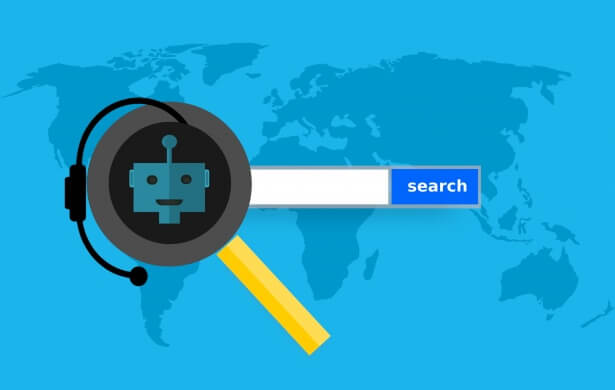
QDF
It is short for Query Deserves Freshness which is a mathematical algorithm that lets search engines decide whether a particular user demands new information or they don’t. In other words, a search engine decides to show up-to-date webpages for certain searches which might be drastically changing with news events around the world.
Quality Content
It is any content worth resolving real people’s real requests. Quality content provides accurate and satisfying data to the user demanding it on the search engine may it be a rocket science question or a nursery rhyme. They must be precise and easy to understand for the internet user. It helps search engines decide how relevant your page is and where it should be ranked.
Quality Link
It is an inbound link from an established website.
Query
It is the question a user wants the answer for, from a search engine where they type related keywords or phrases to find various websites resolving their problem.
R

Rank
It is the position of a website on a search engine’s SERP for a set of a particular keyword(s).
Ranking Factor
These are the criteria that the search engine’s algorithm analyzes before ranking pages in its SERP.
Reciprocal Links
Links that two websites share with one another after agreement.
Redirect
Also known as URL Forwarding where a web browser opens a URL that opens a different URL with the same content i.e. one webpage is available under various other URLs. Classic examples of redirects are 302, 303, Meta Refresh, etc.
Referrer
It is the webpage that takes a user to another site using a link. The referee helps in identifying the origin of the user’s webpage request.
Reinclusion
It is asking search engines to submit a webpage again to the search index or the database.
Relevance
It is the significance of the content of a website that responds to a query most appropriately. It decides the rank of your website in SERPs.
Reputation management
It is the act of improving the quality of brand value a business gets by optimizing it on the SERPs by SEO tools and techniques. It is the approval of high-quality content over lower quality content.
Responsive Website
It is a website created by a responsive web design that aims at proving the best UX by adapting to the size of the user’s device which may be a desktop or a smartphone. It makes it more interactive and creates prospects for your business.
Rich Snippet
These are structured data markups that can be inserted in the HTML source code of a page to help search engines to understand the context and the content of the webpage and display the same on SERPs. This information is displayed in the search engine listings making it a rich snippet.
Robots.txt
It is the Robots Exclusion Protocol. It is a text file created by a website owner that directs the bots and crawlers how to crawl their webpages, which URL is accessible, and which one is denied.
Return On Investment (ROI)
It is the estimated measure of return and thus profit on specific investment(s). It is calculated as follows
[(Gain from investment – Cost of investment) / Cost of investment] * 100
It is a Key Performance Indicator (KPI) that helps businesses set goals and track their campaigns and investments.
To Understand more about this SEO term please watch this video,
S
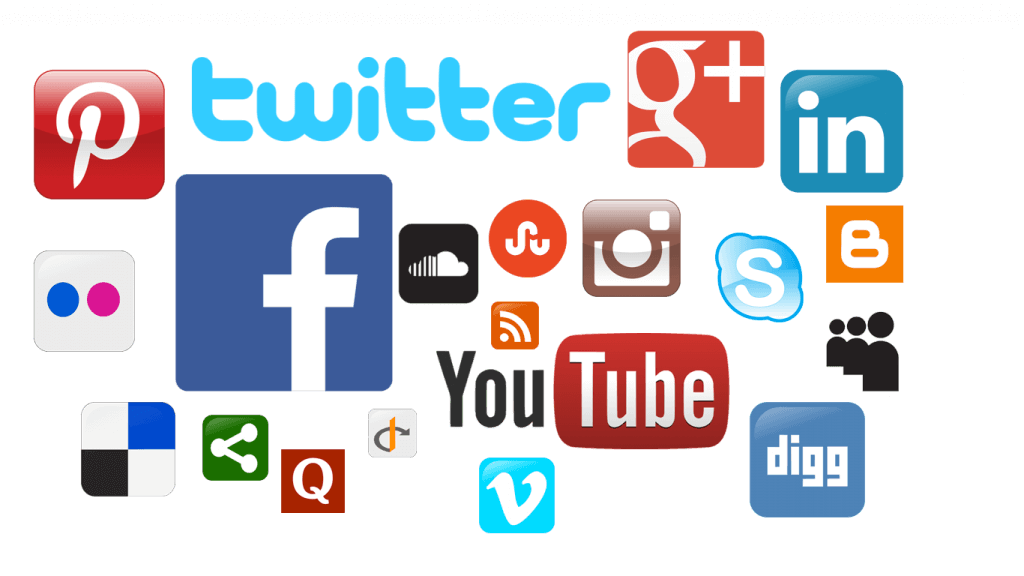
Schema
It is an HTML markup code that optimizes your visibility by displaying textual content under your URL on the search page. In a way, they are rich snippets that convey to search engines and users what your website is about and how relevantly you solve their needs and queries.
Scrape
It is the process of extracting data of a website with the HTML code and information in the databases by bots to reproduce that content at another location. It is used by search engines to index websites in their databases and is also known as Web Scraping.
Search Engine
It is software where a query is answered by processing all the available information on the world wide web by a systematic program. Google is an example of a search engine that lets people upload information on the internet and then indexes it in its database where it manages and processes relevant data to reproduce while a query by any random user is searched. The search indexes of search engines are maintained by crawlers and bots which are programmed to rank the most relevant data on the top of a Search Engines Result Page.
Search Engine Marketing (SEM)
It is a marketing technique in which the aim is to increase the visibility of a website on the Search Engine Result Page primarily via employing advertising strategies like Pay Per Click
(PPC).
Search Engine Optimization (SEO)
It is increasing the value of a website on the internet by raising its position and visibility in the organic search results of a search engine. The optimization involves thorough research on what search engines want from a website, what the users want from the internet, and what the customers want from a business. This knowledge helps SEO and Digital Marketing companies decide suitable strategies for websites to rank in SERP which generally involves On-Page SEO (coding, layout, content, services, etc) and Off-Page SEO (marketing, advertisements, link building, etc).
Search Engine Results Page (SERP)
It is a page on the search engine that loads when a user searches a query. It lists all possible results from different websites in chronological order of relevance of the content.
Search History
It is the track of all the web pages a user signed into a search engine has ever visited along with the log referring to the exact time a query was searched or a website was opened or even clicking on an ad. This data is used by search engines and businesses to show the users personalized ads.
Share of Voice
SOV is the share of how much a brand is expressed in the SERP or any medium. It is the measure of a brand’s visibility and conversion rates in its industry and is used to analyze the competition and reach the respective audience than its competitors.
Sitelinks
These are a set of hyperlinks that search engines add under the URL and rich snippets for easy navigation within a website. There can be up to six such hyperlinks and are generally given to a high-quality website by the discrete algorithm of the search engine.
Sitemap
It is a location where the blueprint of a website can be found, i.e. here all the web pages are listed for easy navigation.
Social Media
They are a number of internet-based web applications or websites where users of the world wide web can interact and share valuable information. Due to its positive impact on the development of society, it is also being exploited in the domain of commerce. Some famous social media applications are Facebook, Facetime, WordPress, etc.
Social Signal
Social signals are the measure of the popularity of the content and the organic traffic it was able to engage on social media applications. For example number of likes, shares, comments, etc.
Spam
These are irrelevant messages and communications on the internet.
Split Testing
Also known as A/B Testing is aimed to find the difference, popularity, and success of two different ideas or strategies in the realm of digital marketing. This comparison is done by means of experiments over a short period of time and mostly involving a sample population. For example beta testing of the new algorithms of a web application.
SSL Certificate
Short for Sockets Secure Layers, it is a certificate that verifies that the information between a website and its users is encrypted, i.e. helps a website to move from HTTP to HTTPS protocol.
Status Code
These are codes issued to a server when a query is requested by a client. These are responses sent by the server when a link is opened or a form is submitted. For example 200 for OK, 404 for Page Not Found, etc.
Stop Word
These are common words that search engines ignore before and after processing the text. They are articles, prepositions, conjunctions that are of not great value for SEO.
Subdomain
A subdomain is a branch of your main domain. There can be multiple subdomains.
For example, xyz.com is a domain while store.xyz.com is a subdomain.
T

Taxonomy
Taxonomy in SEO means structuring a website’s web pages into branches with relevant order and rank systems so that they are easy to find. It is also known as URL Taxonomy i.e. creating sub-folders of your content.
Time on Page
It is an approximate measure of time for which a user stays on a webpage, calculated from, the time the user first lands on the webpage till they switch to another webpage.
Title Tag
They are HTML elements where the title of a webpage is mentioned, it can be seen at the starting of the HTML source code and appears when a query is searched on the search engine. It is also a deciding factor to gain organic traffic as it is the text that appears on the SERP as the main heading of your article.
Top-Level Domain (TLD)
In the hierarchical DNS, the top-level domain is the part that appears just after the domain name i.e. the text that appears just after the dot. For example, xyz.com, here .com is the TLD. Other famous TLDs are .org, .net, .gov, .info etc while there also exist country or region-specific domains like .in for India, .uk for United Kingdom etc.
Traffic
Traffic literally means movement of vehicles on roads while in SEO, Traffic is the bread and butter of the digital marketing realm. It is the number of organic people who searched a query and visited a particular website to satisfy their search just like we take a specific road to reach our destination. The more traffic to a website, the more popular it is for its convenience and relevance and hence gains more profit in internet marketing.
Trust
It implies the virtue of a website to be truthful i.e. its security in terms of discreteness, its user-friendly nature, and above all its quality to be legally appropriate.
TrustRank
It is an algorithm that can separate relevant pages from spam pages that appear in SERP.
U
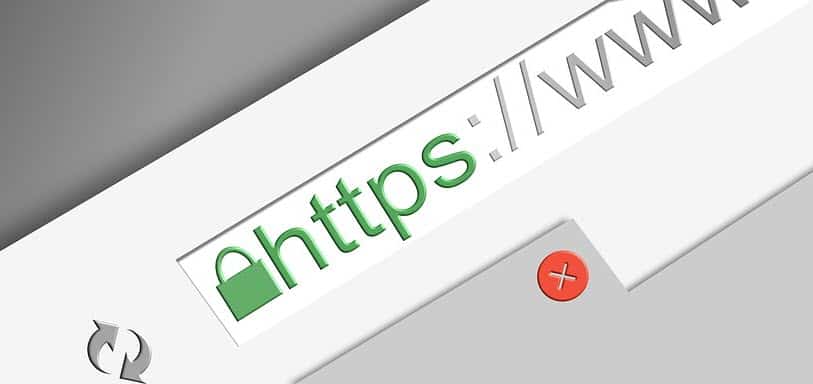
User-Generated Content (UGC)
It is the content that users create in the form of photographs, videos, texts on social media applications or as feedbacks and comments on websites.
Universal search
This tool allows search engines to collect information from diverse data points and display it in a single SERP which is usually rich with graphics, snippets, and rich URLs.
Unnatural Link
These are links created to manipulate page ranking on the search engine by spammers. They are created to link your website to poorly reputed websites in order to defame and demerit your SERP ranking. These links are not owned by any webmaster and are a clear violation of Google’s Webmaster Guidelines.
URL
It is short for Uniform Resource Locator i.e. a standard address to locate a unique resource on the internet. These resources can be anything from a document file or image to an HTML code. A simple example of a URL for google is https://www.google.com/
URL Parameter
It is in the form of a query string in the URL where information about a click can pass with added values to some parameters. These values help in tracking the traffic that comes when a user clicks on it.
Usability
In digital marketing, SEO and Usability are the two hands-on which the success of your business depends. SEO deals with the search engines and technical parts of the internet while usability is something that has existed forever. Usability is the measure of ease that a user gets while interacting with your website or product. In other words how well your website’s foundation, design, and other features are laid down. It is convenient accessibility to your website.
User Agent
These are software that helps in creating, managing, and optimizing the web content of a website. These are accessible only to the webmaster or end-users and supports web crawling in form of browsers, plug-ins, etc.
User Experience (UX)
It is the experience that users gain after visiting and interacting with your website. This UX decides if a prospect would turn into a potential subscriber and will return for freshly brewed content on your website. SEOs try to make this experience mesmerizing for your brand to your audience.
V

Vertical Search
It is a specialized search as opposed to a generalized search where every kind of content pops. In vertical search, a specific type of content and topic areas are focussed. For example, Google’s Vertical search bar addresses specific sections related to the query like Images, Shopping, News, Travel, etc.
Virtual Assistant
It is usually an internet bot with programs that enables it to decode natural language and then provide results for the same which could be in either audio mode or traditional textual mode. Google’s Voice Search and Apple’s Siri are to name a few.
Visibility
It is the natural ranking of a website for specific keywords on the SERP with respect to its competitors i.e. how many organic clicks a website is attracting which leads it to a specific rank visible on the search engine.
Voice Search
It is a technology that can take commands from a user’s voice ( Speech-to-Text command) and searches the internet to conduct research for the query made with speech.
W

Website
It is a collection of web pages that be requested for on the internet.
Website Navigation
It is the process to navigate web pages within a website and is helpful for users to interact with the content with ease. There is a system of hierarchy in website navigation including:
Main Navigation
Secondary Navigation
Footer Navigation
Webspam
It is the act of spamming the world wide web with the generation of irrelevant and deceptive content to gain ranking on search engines. They are often repetitive and can be infringing the copyrights of a reputed digital entity. In the cyber world, it is a malicious attempt to demerit competitive websites.
White Hat
It can be a person or technique employed to legally hack a digital brand or website to show the possibility of repair and possible security threats. They adhere to ethical cyber guidelines.
Word count
It is the number of words in a piece of content on the internet and can be a factor in deciding the quality of the content or webpage.
WordPress
It is an open-source digital publishing software where one can create and manage websites and freely express their ideas in the form of blogs. It is written in PHP clubbed with other technologies like MySQL and MariaDB for database management.
X
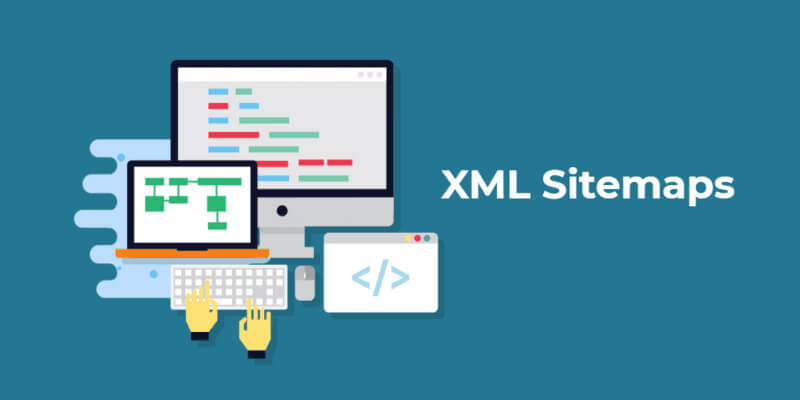
XML
Short for Extensible Markup Language contains both text and tags and is used by search engines to read a website. It is understandable to both humans and search engines and can store structure, and transport data.
XML Sitemap
It is the compiled list of URLs of a site used for crawling by search engines.
Y
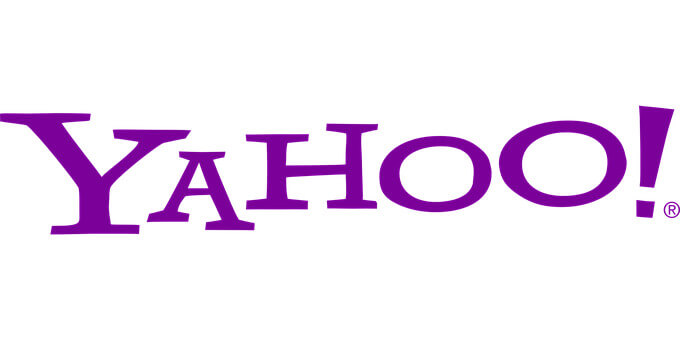
Yahoo
A directory of the World Wide Web owned by Yahoo! an internet services provider offering search engines, mailing, news services.
Yandex
It is a Russian search engine founded in 2000 and offers as many as 70 internet services. It is the most popular search engine in Russia offering other facilities like emailing, storage, mapping services for free.
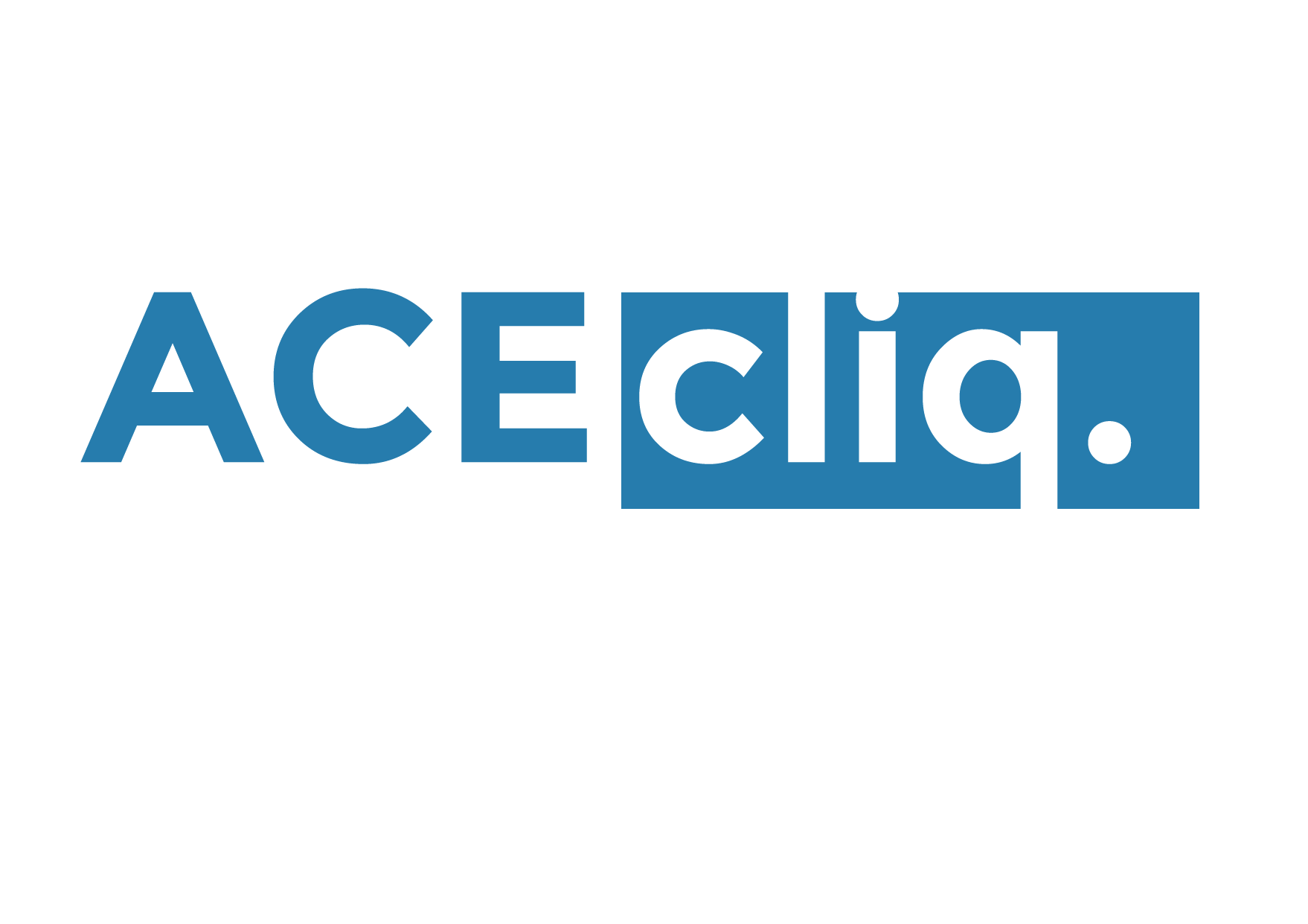
Recent Comments